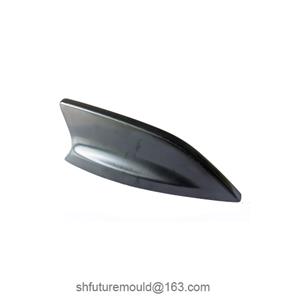How to Optimize Temperature Distribution in PPS Injection Molding
PPS (Polyphenylene Sulfide) is a high-performance engineering plastic known for its excellent heat and chemical resistance. However, due to its high melting point, temperature control is critical during the injection molding.
1. Adjust the Heating System
Optimize Barrel Heating Zone Temperatures
Ensure a reasonable temperature gradient across the barrel's zones, typically divided into three areas: the feed zone, compression zone, and metering zone. Based on PPS material characteristics, the feed zone should have a slightly lower temperature (to prevent premature melting), with the temperature increasing progressively in the compression and metering zones.
Example: The recommended barrel temperature settings for PPS may range from 280°C to 320°C.
Ensure Uniform Heater Power Distribution
Distribute heater power evenly across the barrel to prevent localized overheating or underheating.
2. Control Mold Temperature
Set Mold Temperature Appropriately
PPS materials generally require high mold temperatures (120°C–160°C) to ensure proper crystallinity and surface quality of the molded parts. Use a mold temperature controller to achieve precise temperature regulation.
Avoid Large Mold Temperature Differences
Ensure the temperature difference between different mold parts, especially the core and edges, remains within an acceptable range (typically not exceeding 5°C) to prevent warping and internal stresses.
3. Optimize Injection Machine Parameters
Adjust Injection Speed and Pressure
A well-controlled injection speed ensures the melt fills the mold cavity evenly. Injection pressure affects the melt flow and cavity-filling ability. Combine these settings with optimized mold temperature to minimize defects caused by uneven cooling.
Extend Holding Time Appropriately
For PPS materials, extending the holding time helps the product set properly and reduces shrinkage and voids caused by uneven temperature distribution.
4. Use an Efficient Cooling System
Design an Effective Cooling Circuit
Ensure a uniform distribution of cooling channels within the mold to maintain consistent temperature.
Optimize Coolant Flow Rate
Adjust the flow rate and volume of the coolant to avoid localized overcooling or insufficient cooling.
5. Monitor Temperature Changes
Real-Time Temperature Monitoring
Install temperature sensors in key areas, such as the barrel and mold surface, to monitor and record temperature variations in real-time. This will enable prompt adjustments to process parameters.
Data Analysis and Feedback
Leverage data from the temperature control system to analyze temperature distribution trends and identify anomalies for timely resolution.
6. Choose the Right PPS Material
Different brands and grades of PPS materials have varying sensitivities to temperature. Selecting a PPS material suitable for specific processes helps optimize the molding temperature range.




